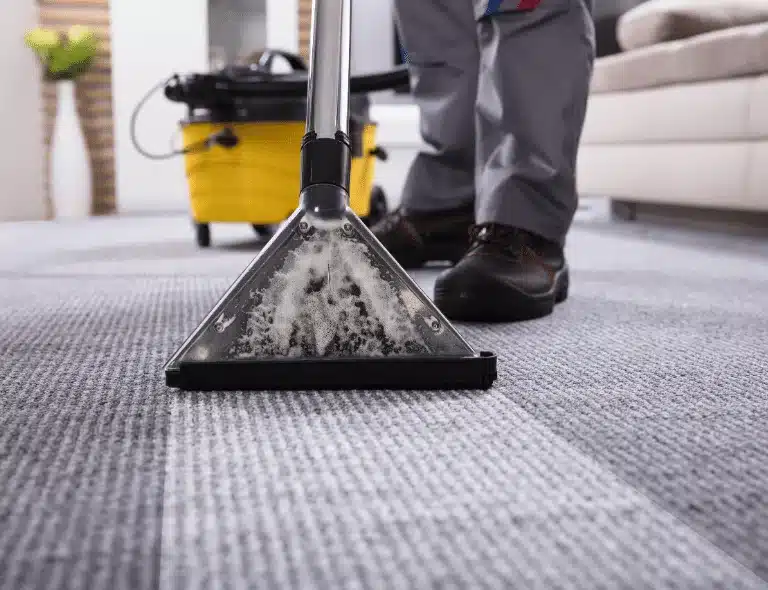Call us: (877) 343 6111
The Top 5 Carpet Cleaning Methods: Pros and Cons
Keeping carpets clean is a never-ending battle in any home. From daily dirt and debris tracked inside to spills and pet accidents, carpets easily become dingy, unhealthy places if left uncleaned. While regular vacuuming takes care of some light soiling, it’s not enough to truly deep clean carpets and remove embedded allergens, dust mites, and grime that accumulate over time.
That’s why it’s important to use specialized deep-cleaning methods on carpets at least once or twice a year. Professional carpet cleaners have access to heavy-duty equipment and cleaning agents that can refresh carpets beyond what’s capable at home. When it comes to deep cleaning methods, homeowners have a few options, each with their pros and cons. Keep reading to learn about the top carpet cleaning techniques available today. With this overview, you’ll be able to make an informed decision about the best method for your home’s needs.
Hot Water Extraction
Also known as steam cleaning, hot water extraction is considered the most effective carpet cleaning method by most professionals. This method uses a specialized machine to inject a heated cleaning solution deep into carpet fibers under high pressure. The solution and dirt are then immediately extracted by a powerful vacuum.
Pros
- Removes the most soil and bacteria of any cleaning method
- Extracts embedded dirt and allergens
- Fast drying time
- No chemical residue left behind
Cons
- The most expensive professional cleaning method
- Large equipment can be difficult to maneuver
- Can overwet carpet if not done properly
Dry Extraction Carpet Cleaning
This method, also called encapsulation cleaning, uses no liquids. Instead, it relies on dry cleaning agents, like powdered detergents, that are worked into the carpet and then extracted by a brush machine. The detergents encapsulate dirt and oils, allowing them to be removed.
Pros
- Leaves little to no moisture behind
- Fast drying time of 1-2 hours
- No risk of mold or mildew growth
- Ideal for low-moisture cleaning
Cons
- It may not remove as much embedded dirt as wet methods
- It can leave detergent residue if not done properly
- Generally more expensive than home methods
Bonnet Cleaning
Bonnet cleaning uses an absorbent pad or bonnet that is soaked in a cleaning solution and then scrubbed over the carpet. The bonnet picks up dirt and is swapped out with fresh ones as needed. Specialized machines automate the process.
Pros
- Very fast drying time
- Low moisture method
- Inexpensive compared to other methods
Cons
- Only cleans surface dirt, not embedded particulates
- It can damage fibers if pads move too aggressively
- Requires many passes for thorough cleaning
Shampooing
Shampooing uses rotating brush machines to work concentrated carpet shampoo deep into carpets. The shampoo encapsulates dirt so that it can be extracted with wet vacuuming.
Pros
- Thorough cleaning for heavy soiling
- Available as DIY or professional service
- Encapsulates dirt well when done properly
Cons
- Very long drying time of up to 24 hours
- Residue can attract new dirt rapidly
- DIY machines may not extract enough shampoo
Foam Cleaning
Foam cleaning uses a special foam-generating machine to apply cleaning foam across the carpet. The foam breaks down dirt, similar to a shampoo method. After working the foam in, a wet vac is used to extract it along with suspended dirt.
Pros
- Foam helps lift dirt from carpet fibers
- No chemical residue left behind
- Good for spot cleaning or small areas
Cons
- Does not clean as deep as liquid methods
- Takes time to generate and extract foam
- Multiple passes may be needed
Key Factors in Choosing a Carpet Cleaning Method
When deciding which of these carpet cleaning methods is right for your home, consider the following:
- Degree of Soiling – Methods like hot water extraction work best for dirt-laden carpets. Lightly soiled areas may do fine with dry extraction.
- Fiber Type – Certain methods work better on natural vs. synthetic fibers. Always check the carpet manufacturer’s cleaning guidelines.
- Accessibility – Larger bonnet and shampoo machines cannot fit everywhere, so they have limited usage in small spaces.
- Moisture – Wet methods like steam cleaning are not suitable for carpets prone to mold growth. Opt for low-moisture methods here.
- Speed – Households that need carpets cleaned and dried quickly should avoid shampooing. Opt for faster methods like encapsulation instead.
Professional vs. DIY Cleaning
While renting carpet cleaning machines and doing it yourself seems tempting, professional cleaners have expertise that ensures better results. They use powerful equipment unavailable to rent and have extensive knowledge of how to properly pre-treat stains, manage moisture, and clean for maximum soil removal. Professionals are also insured, so you don’t have to worry about damage.
For heavily stained or uncleaned carpets, professional deep cleaning is strongly advised. For routine maintenance of lightly soiled carpets, DIY methods may sometimes be suitable.
The Bottom Line
Regular deep cleaning keeps carpets looking their best while removing allergens, bacteria, and dirt. Hot water extraction provides the most thorough cleaning for heavily soiled carpets. More budget-friendly options like encapsulation cleaning may work for lightly soiled areas. Whatever method you choose, following the carpet manufacturer’s maintenance guidelines can ensure you safely clean carpets without causing excess wear. Checking reviews of local professional carpet cleaners can also help identify reputable services for superior results.
